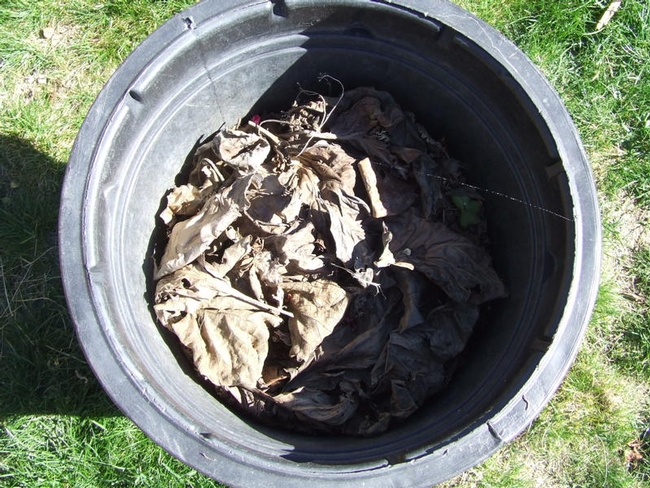Leaf Mold
I spend a lot of time reading the gardening articles produced in England during the middle of the past century. I find the material soothing, as I can’t possibly be expected to actually do anything that is advised. I was interested however, in the vast amounts of “leaf mold” that was believed to be crucial in their gardens. I have since discovered that it is nothing more than compost with a more interesting name.
My own yard is small, steep, and accessible only by stairs on either side of the house. Weary of hauling things up and down in buckets and bags, I have made various attempts at composting on a small scale. One successful measure was to create a “leaf mold bucket” that produced a decent soil amendment about four times per year. The container is a 15 gallon plastic nursery pot that came with a tree. The key is to be selective about what goes into it. I start with leaves, but not just any leaves. Broadleaf deciduous leaves such as sycamore or maple will do well. I have kiwi vines that supply leaves both when they fall in November and again in April when they are pruned. So the pot is filled with leaves and then tamped (you can just step into the pot). Then it topped off with more leaves and tamped again, and again. This is why you have to be choosy about your leaves because they should be dry and brittle so they will crumble. It is surprising how long you can keep this up in such a small container, as the leaves really have little volume when crushed. This special bin hangs out with me for weeks as I periodically sweep the patio of leaves. When the pot really can accept no more leaves, it gets moved to an area of the yard that gets over-spray from lawn irrigation. A little added nitrogen in whatever form you like will help a lot. The top is covered with a scrap of landscape cloth and tied down. It sits in full sun as I am operating under the theory that thermophilic bacteria do not know why it is hot, and they are unaware that they lack the 1.5 feet of insulation they would have in a real compost pile. The black plastic does indeed keep the material warm and you can judge your success by how rapidly the volume decreases. If you want to aerate the leaves, just roll it along the ground for a bit. When the volume decreases to 50%, you should have something that looks like purchased compost and you can amend your soil or use it for mulch as needed.
I really should emphasize that this is not real composting and I am relying heavily on bacteria and fungi to break down the leaves. No kitchen waste is added except for rare doses of coffee grounds. It only works because the leaf particles are so small when the project begins and relatively free of weed seeds. However, if space is limited and you would like to do something with your leaves besides plunking them for curbside pick-up, leaf mold in a pot is an option.

Leaf mold. (photo by Meg Grumio)

